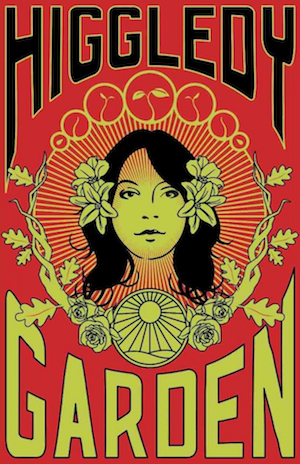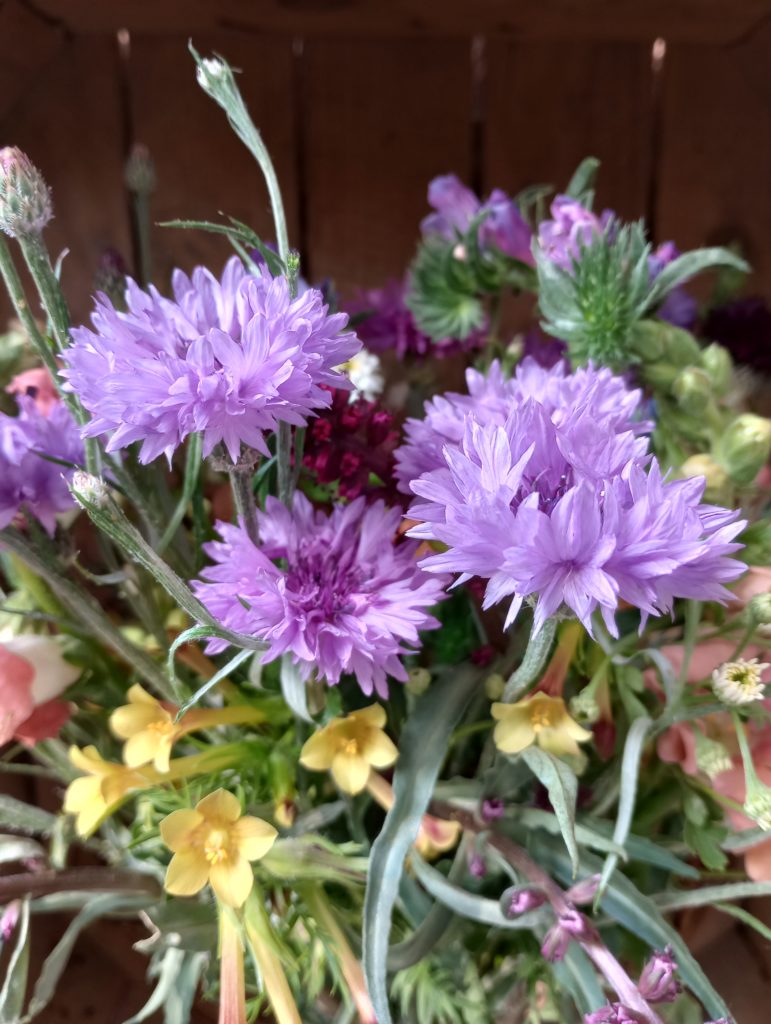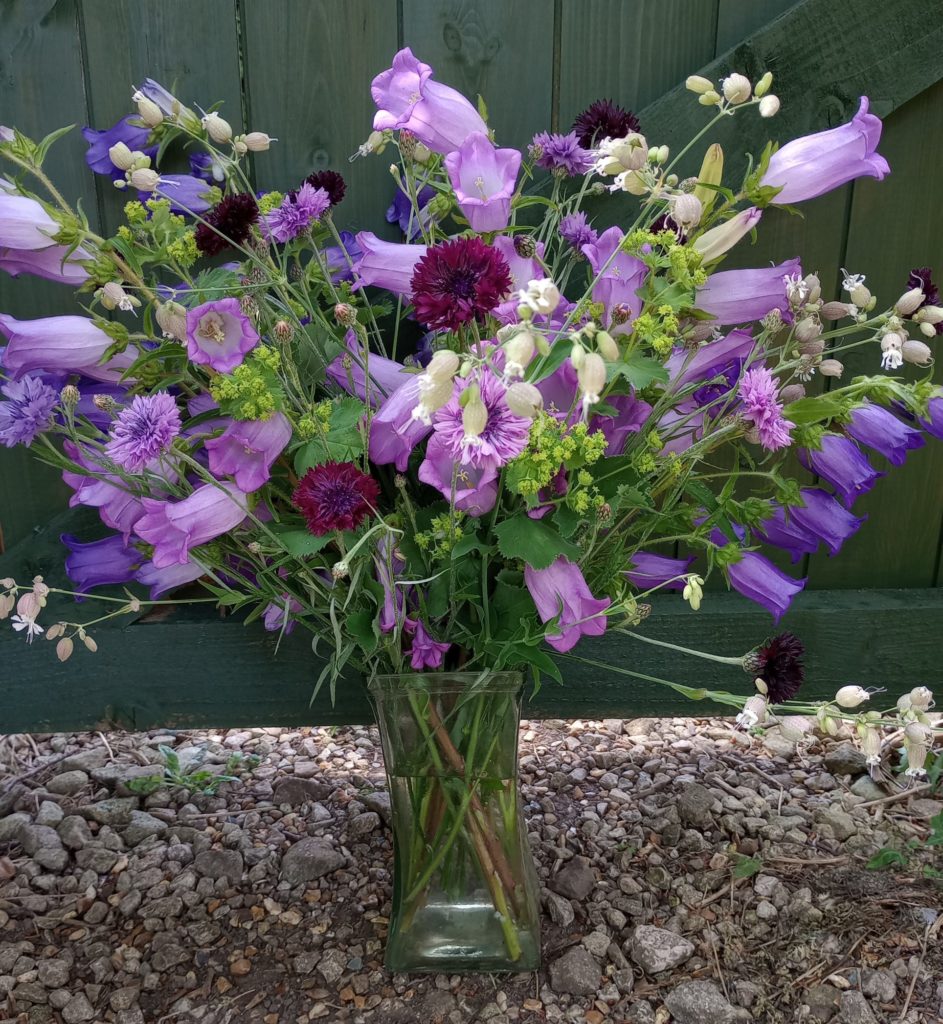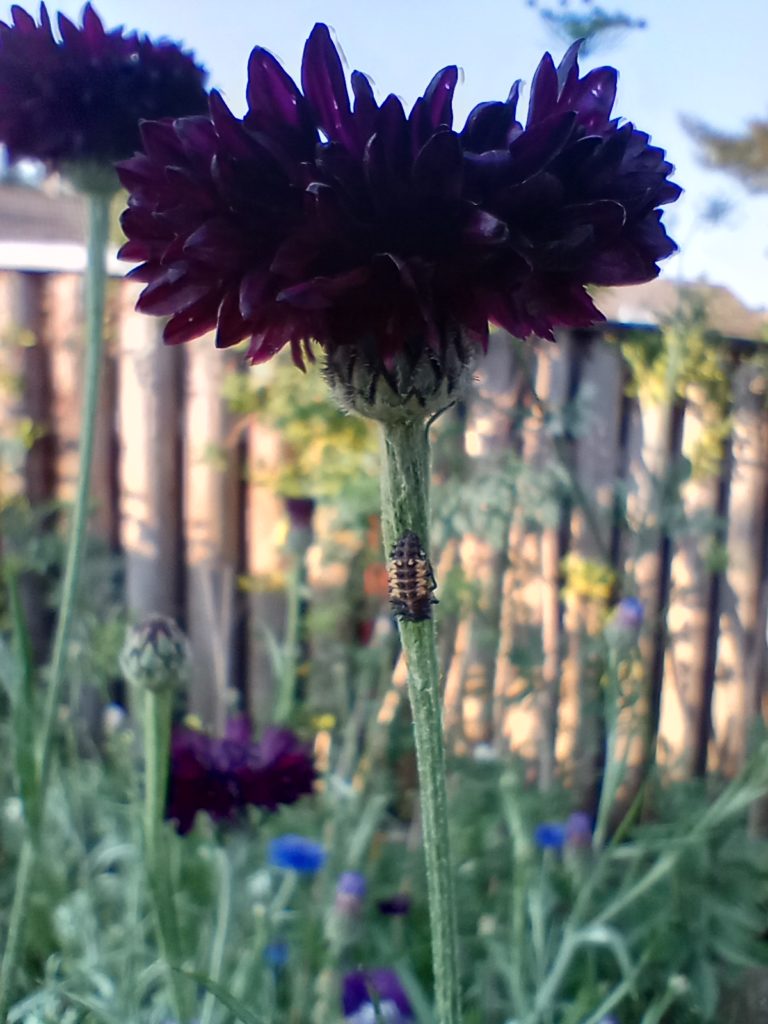The rain feels a bit relentless this autumn, my garden is saturated, its covered in leaves, the lawn is all muddy (again I’m having that yearly battle in my head of why I’m keeping a lawn when I could have more room for flowers!) and its all feeling a bit soggy. So to cheer myself up I’ve been sorting out my photos from last year and celebrating the successes.
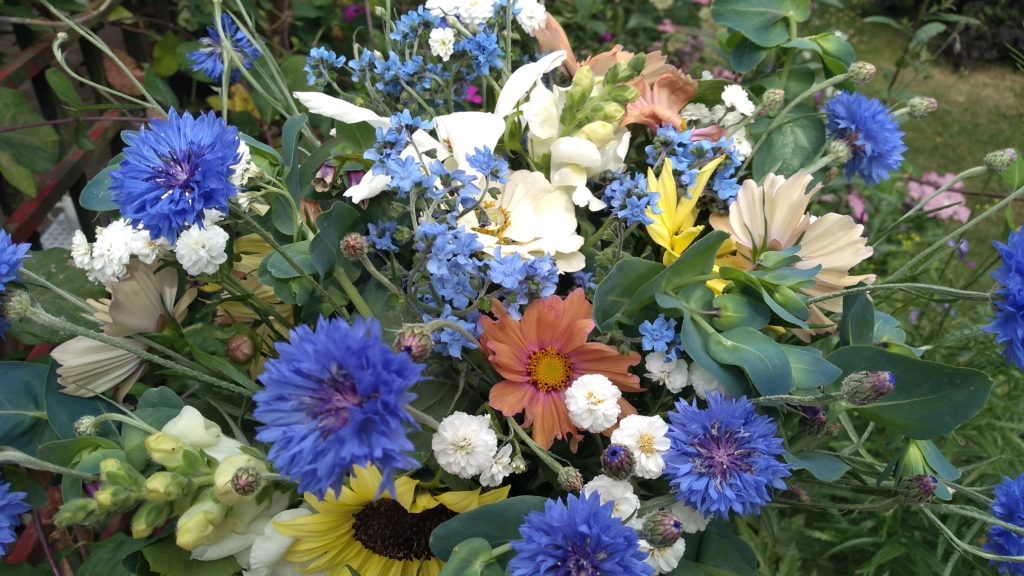
One of which was the Cornflowers, how can anyone not love that blue, pure blue of Centaurea cyanus. Its quite appropriate to talk about it at this time of year as the Cornflower is the French flower of remembrance equivalent to the poppy here. Its called the Bluet de France and a small blue flower is often worn in France on the 11th of November to commemorate those lost in the war.
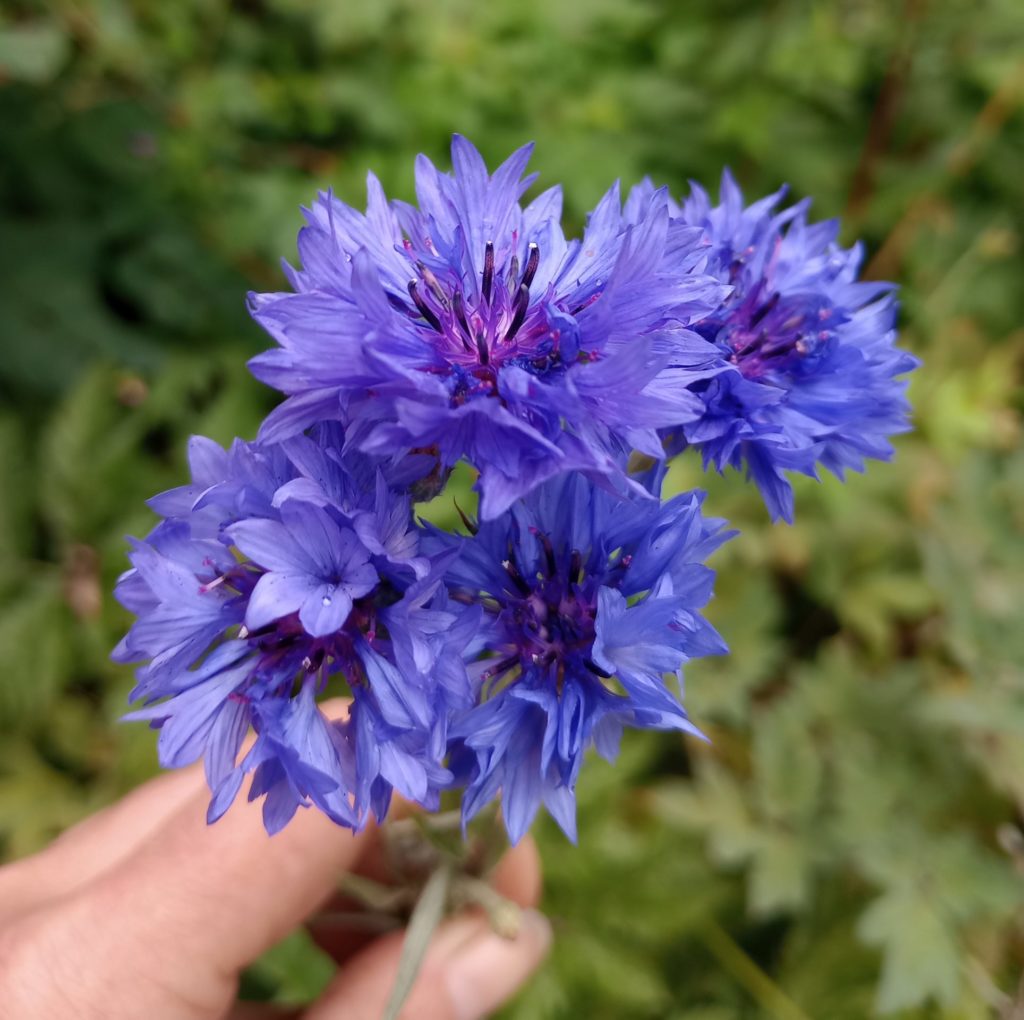
It comes in a range of colours from white, to purple to almost black. It has many common names one of which is Batchelors Buttons, because it was worn on the suit buttonhole of young men looking for love. Simpler times hey?!
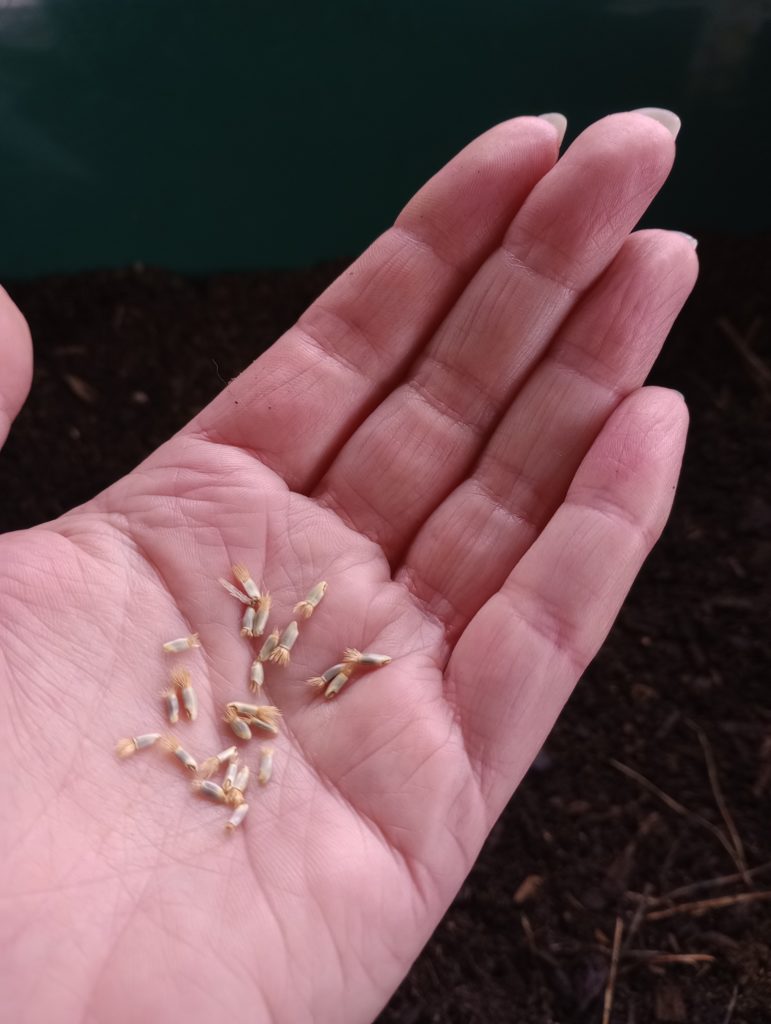
Its a hardy annual and is so easy from seed (the seeds incidently are so cute, like little shaving brushes) and it can be sown directly into the ground in spring, but I tend to sow undercover into pots and grow them on a bit before planting them out. This give them a bit of protection from slugs which can nibble on the fresh young growth if you are not careful.
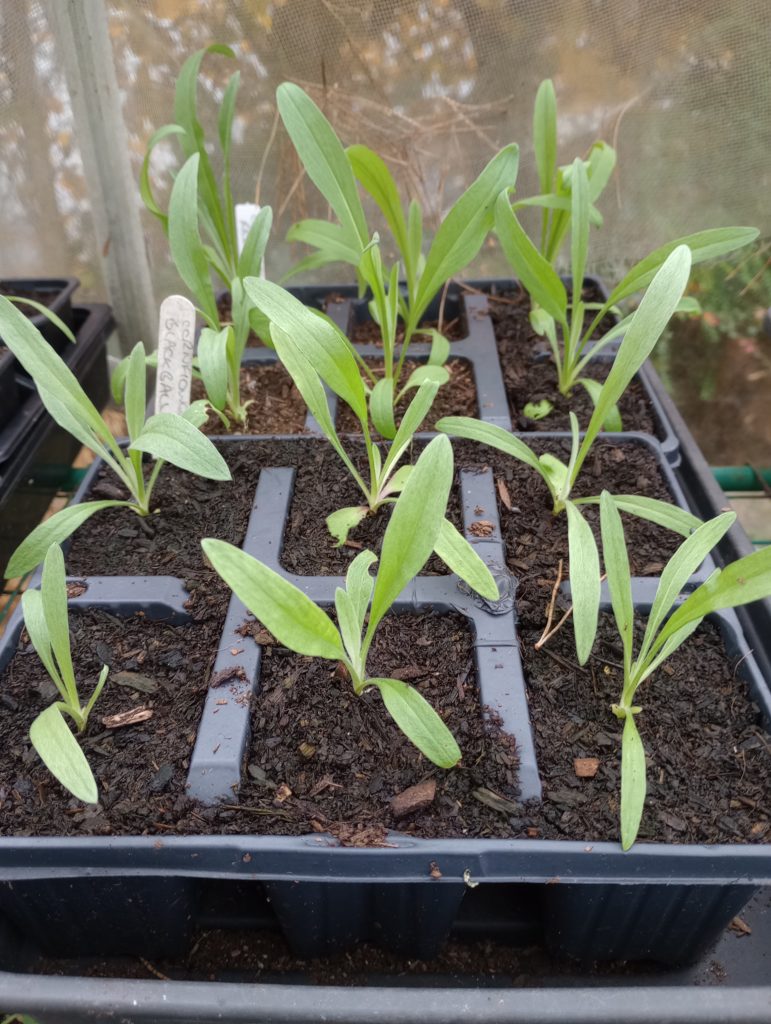
I also tend to sow in the autumn and protect them in a cool greenhouse over winter and then they grow into nice stockier plants and flowers nice and early. They are tough cookies and were one of the few plants that survived that horrendous really long cold spell last winter getting to minus 9 degrees in my greenhouse. I planted them out at the end of March and had my first flowers at the end of May. So flowering at a similar time to the biennials like Sweet Rocket and Honesty.
They look fabulous in bouquets and add a wild look, I tend to pick low down picking multiple stems with buds as well as they look almost as lovely as the flower. The flower lasts longer in the vase if its picked once the bud is starting to open and showing perhaps half of its colour.
The Cornflower ‘Black Ball’ is most versatile though and combines well with many schemes, with rich reds or even looks great with more subtle peach and apricot colours. Here is Cornflower ‘Black Ball’ looking fabulous with Cerinthe, Chrysanthemum ‘Rainbow Hippy Lovechild‘, Calendulas Indian Prince and ‘Sherbert Fizz’, Orlaya grandiflora and Omphalodes linifolia ‘Little Snow White’.
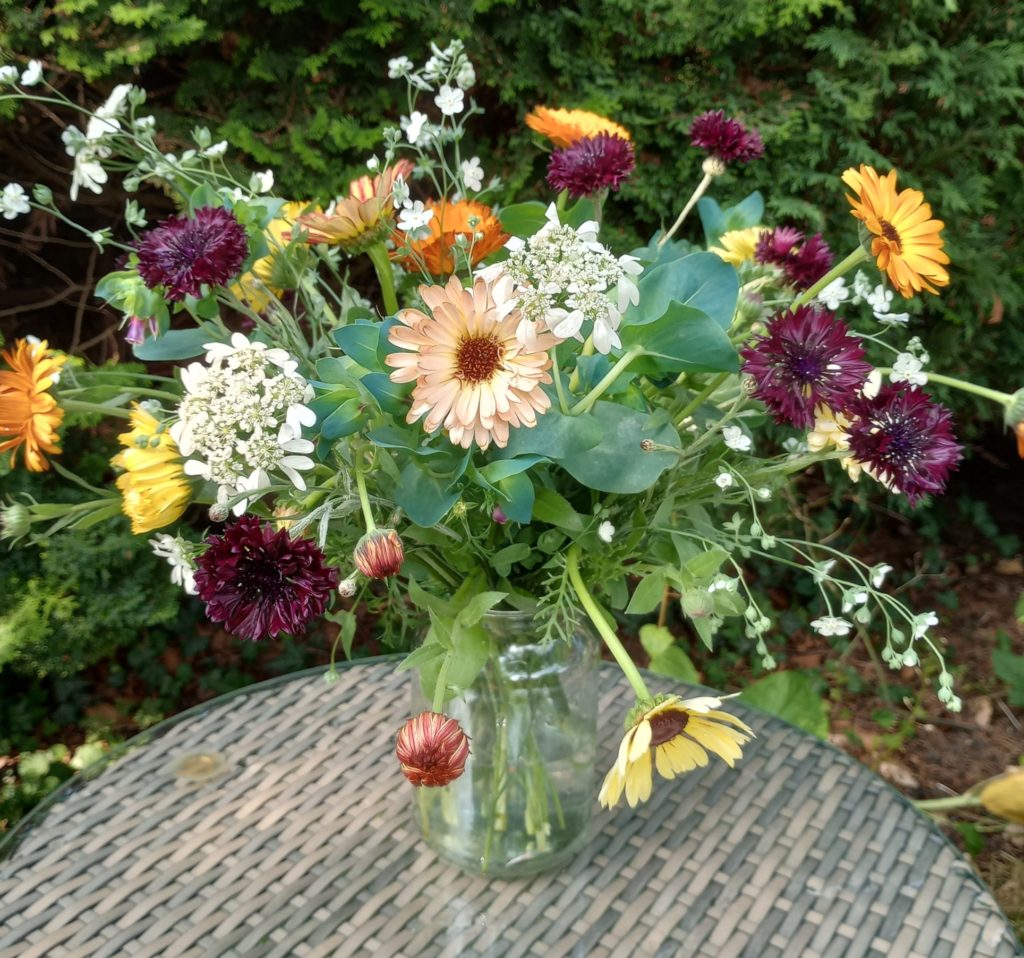
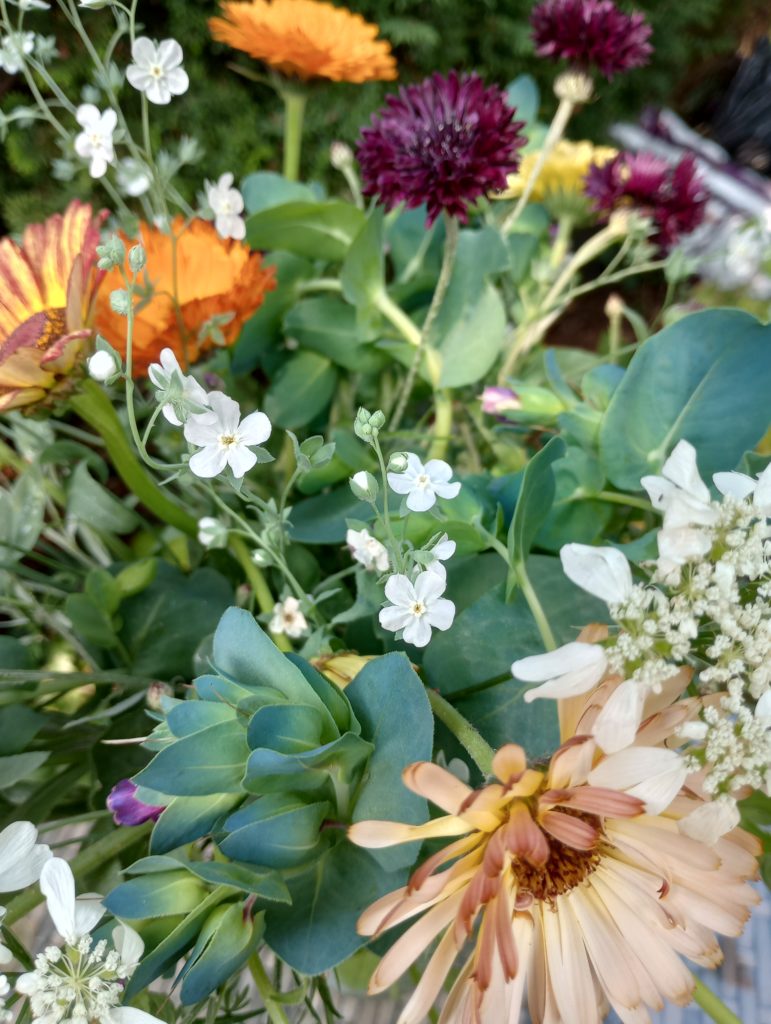
Here is a more monochrome mix with Sweet William ‘Nigricans‘ and ‘Alba’, Orlaya grandiflora, Echium ‘White Bedder’, Allium ‘Graceful Beauty’, Physocarpus ‘Diablo’ and Sanguisorba ‘Crimson Queen’.
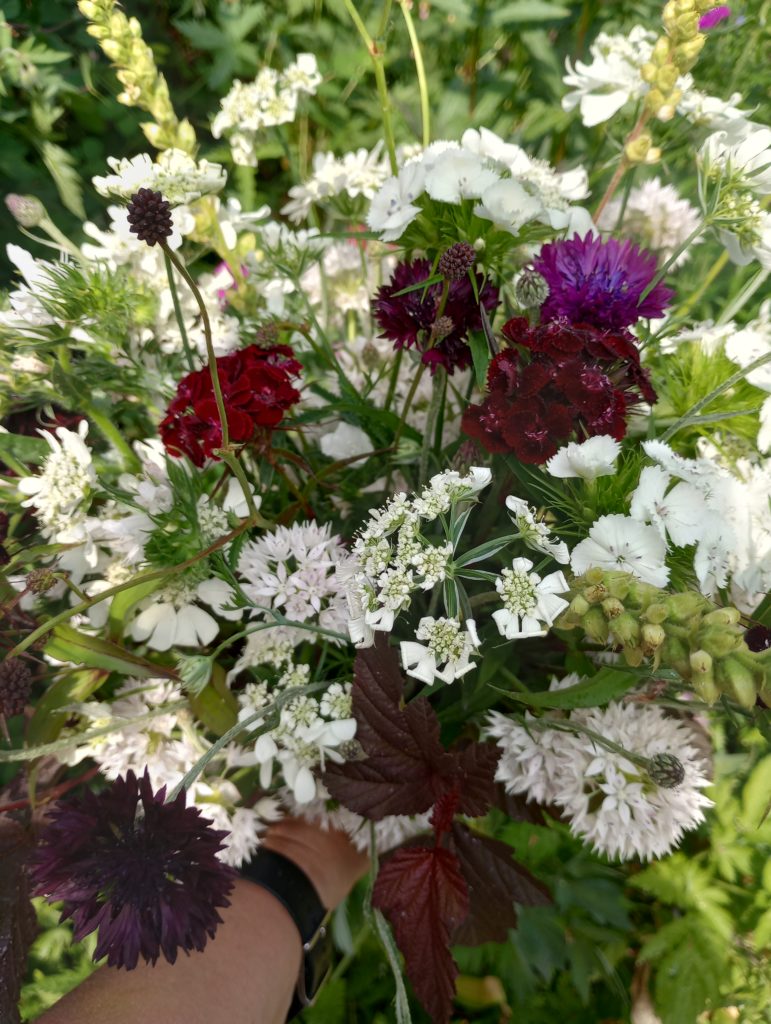
Here with the rich reds of the Rose ‘Munstead Wood’ and Ranunculus ‘Purple Heart’ with White Honesty and Orlaya grandiflora.
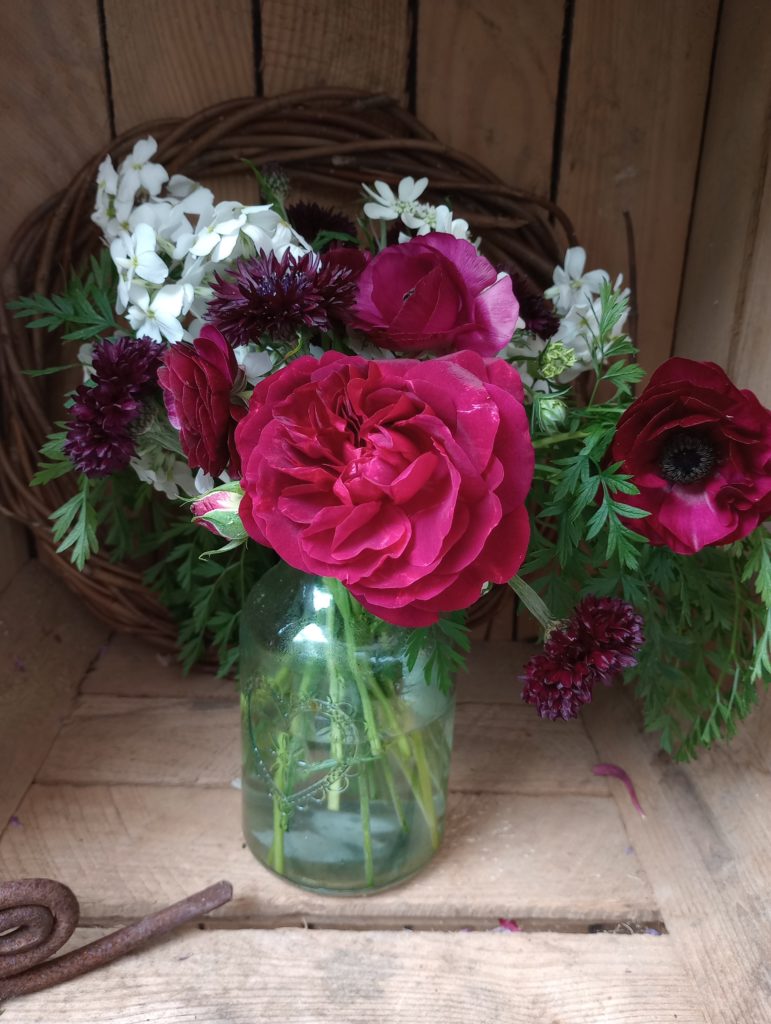
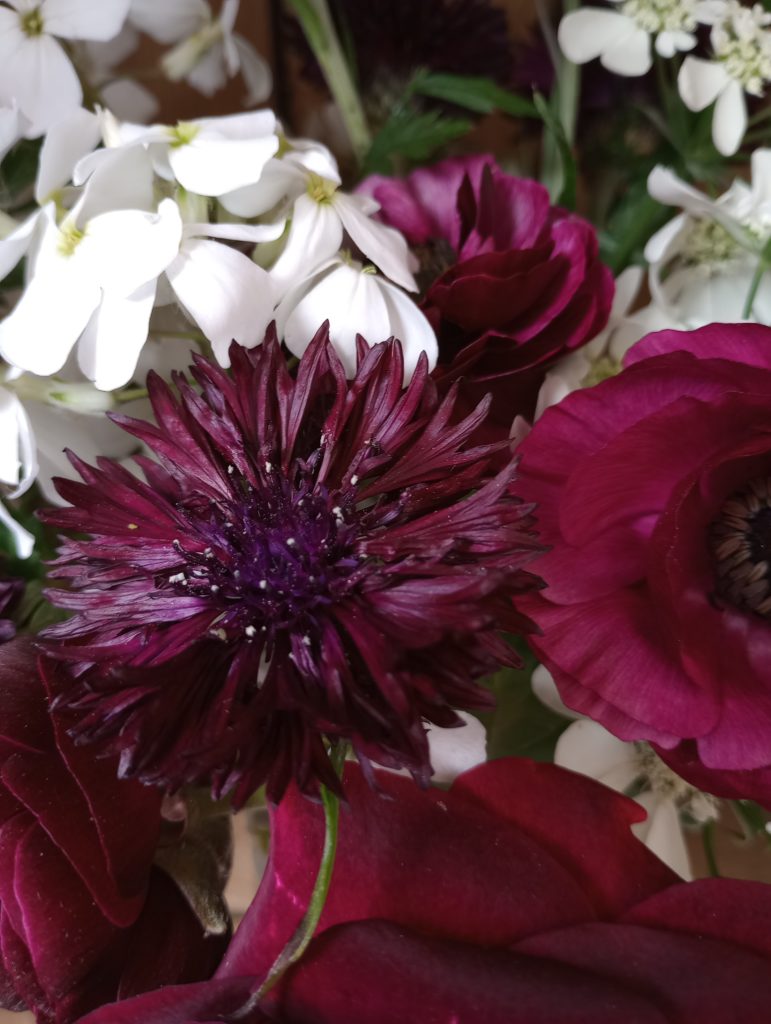
The Cornflower ‘Blue Ball’ is quite a vibrant blue but I think it goes well with colours like yellow, orange and acid green that make the colours pop. Here with Cynoglossum ‘Firmament’, Cosmos ‘Apricotta’ (coming soon to Higgledy Garden!), Cerinthe, double Feverfew and Helianthus ‘Valentine’.

This year I’ve grown a variety called ‘Mauve Ball’ which is a lovely lilac colour, almost matching the colour of Hesperis Purple and its been lovely to mix it up in bouquets.
Here is ‘Black Ball’ and ‘Mauve Ball’ in my favourite bouquet of the year, with Canterbury Bells (Campanula medium -now on sale at Higgledy garden), Alchemilla mollis and Silene vulgaris.
Keep picking or deadheading to keep them flowering for a longer time. But one great thing about them is, if like me you haven’t got a massive cutting patch, that they are efficient for space as they grow tall and slim! They will need some support though, especially if autumn sown as these tend to be taller plants. Mine flowered well until early July and then looked a bit straggly you really have to keep on top of deadheading to keep them flowering but the key for longer flowering is to sow successionly. So sow a second batch in late spring which grow quickly and will extend your picking season. Or you could just dig them up and replace them with late season annuals such as Zinnias or Cosmos and extend your growing season that way. They are also good for drying and last but not least the bees and insects love it. Here with that gardeners friend, the ladybird larvae, voracious eater of aphids!
Will you be growing Cornflowers this year?
Higgledy Anne
(I’m on Instagram anne_hinks and on Twitter Anne Hinks if you fancy a follow)
